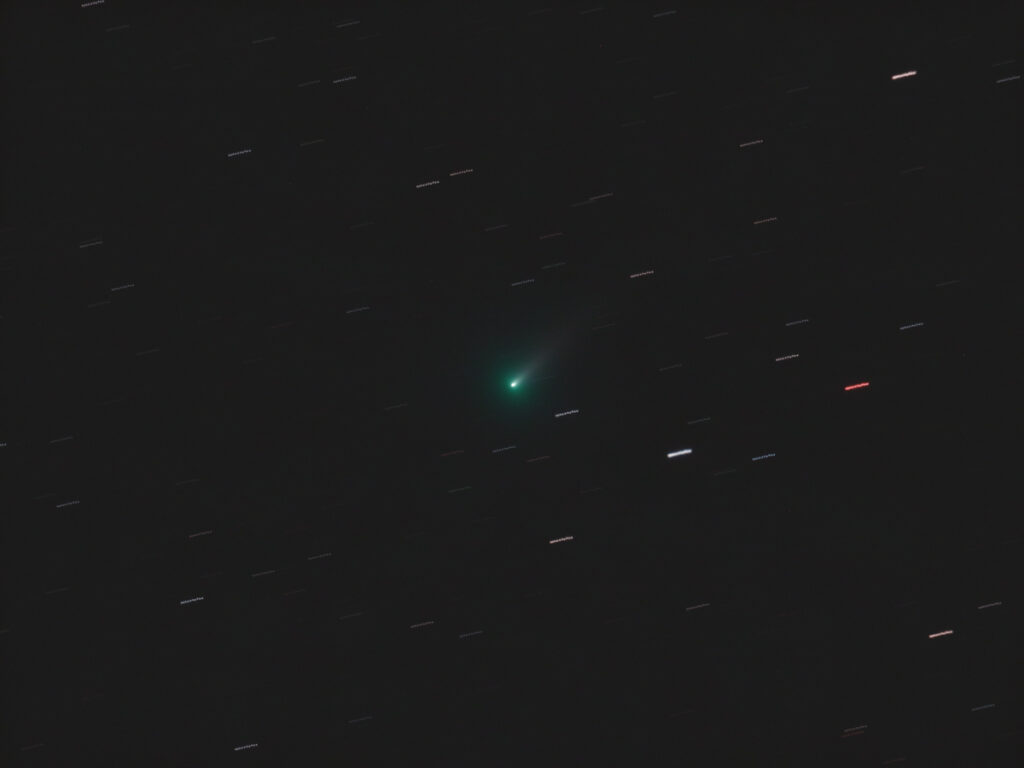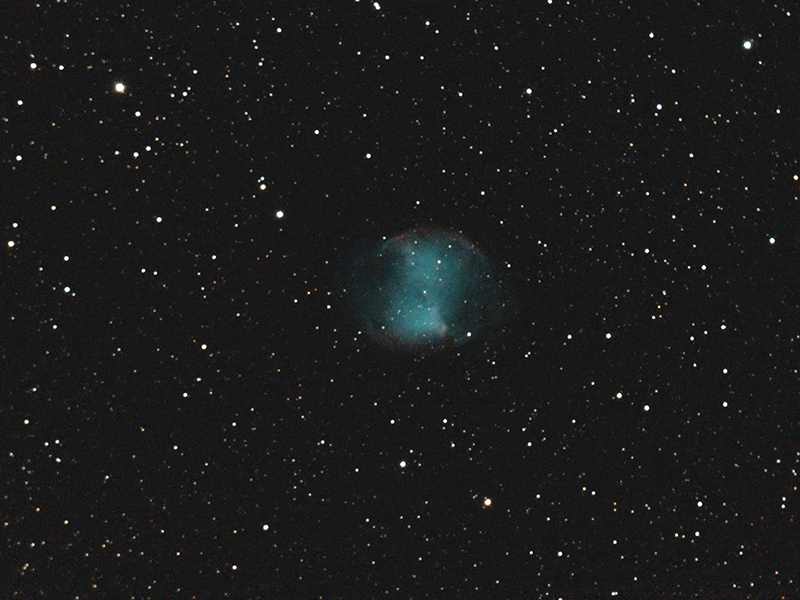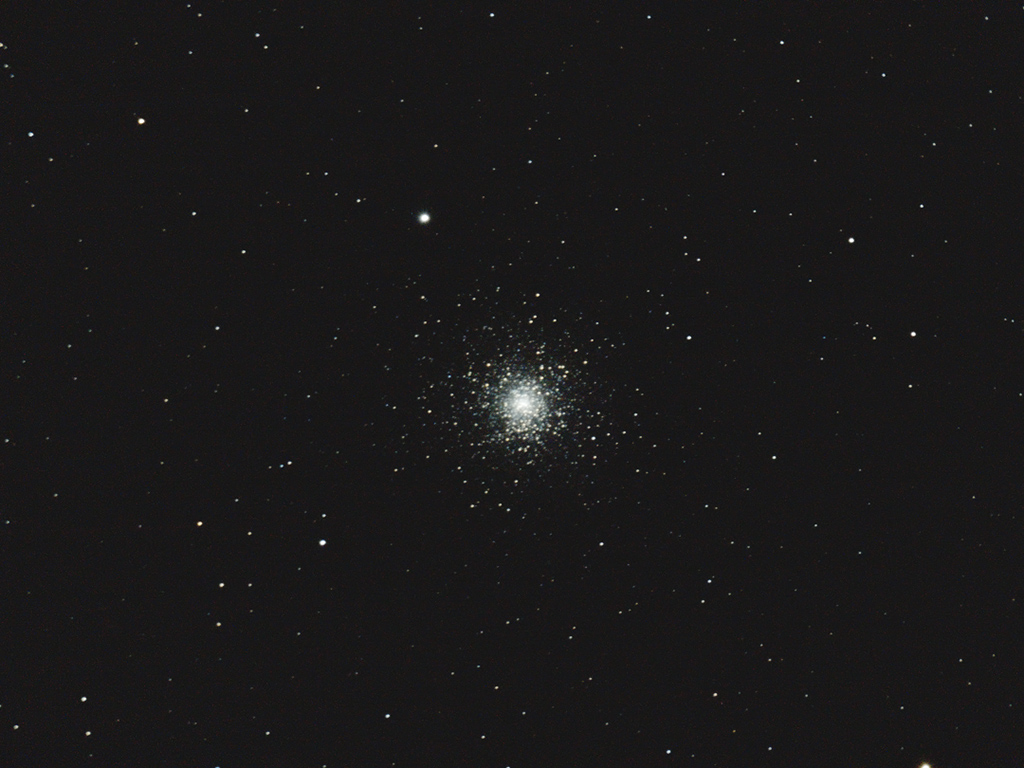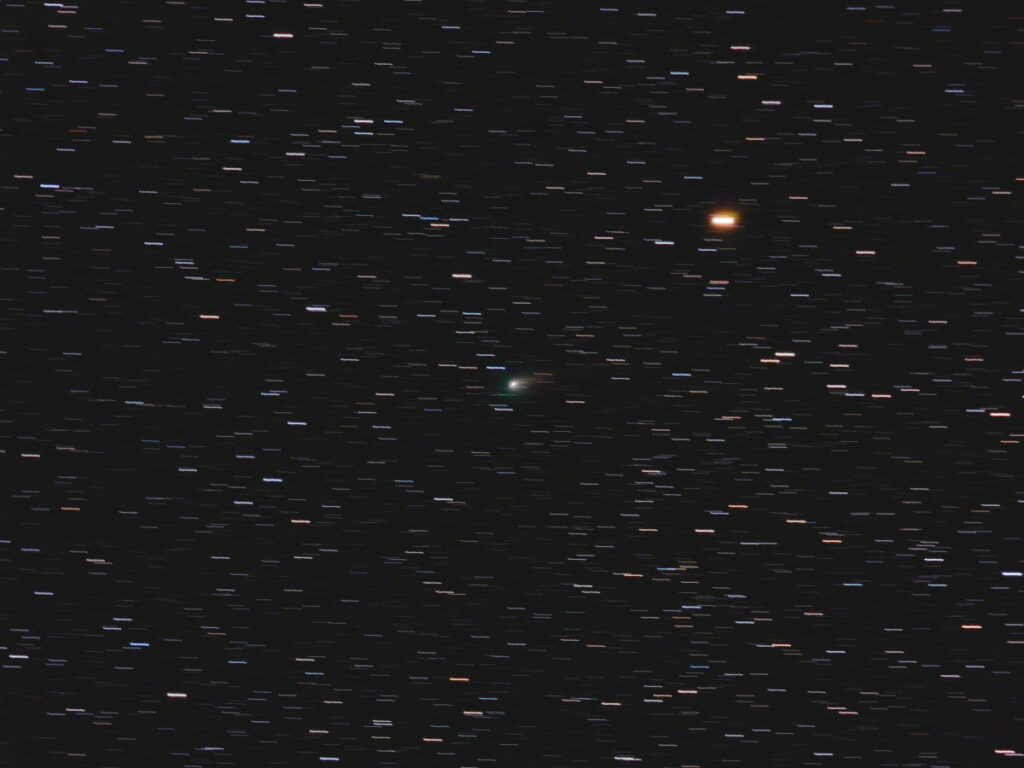
Telescope: Light Switch 8 @ f/6.2 (Optec 0.62x focal reducer), altaz mode
Camera: Full Spectrum Modified Canon 600D, interval timer
Filter: GSO IR Blocking Filter
Guide scope: None
Exposure: 29x10sec, ISO 1600, saved as RAW
Darks: Internal (Long Exposure Noise Reduction On)
Flats: 32×1/10sec, Tee shirt flats taken at dusk
Average Light Pollution: Red zone, Bortle 8, poor transparency, low altitude
Lensed Sky Quality Meter: 17.8
Stacking: Mean with a 1-sigma clip.
White Balance: Nebulosity Automatic
Software: Deep Sky Stacker, Nebulosity, Photoshop
M3 is a beautiful example of a globular cluster in a relatively lonely stretch of sky. The cluster is a member of the galactic halo and spends much of its time orbiting well outside the plane of the galaxy. It is presently 33,000 light years away from us, 40,000 light years from the galactic core, and 33,000 light years ‘above’ the galactic plane. Home to about 500,000 stars, M3 is relatively young as globular clusters go with an estimated age of 8 billion years.
This is one of a series of images that I have been taking to explore using relatively simple equipment and techniques and the firt image taken with my Light Switch 8 at f/6.2 using my modified 600D. The LS8 did okay in its native f/10 configuration, but reducing the focal length a bit made the tracking a bit more forgiving. This late-season image of M3 is a good example of how nice it is having the option of using a simple setup. With my usual imaging gear I’m limited to imaging object on the east side of the meridian. However, with this simple altaz system there’s nothing to align, I just pluck it down out in the middle of my backyard where I have access to more of the sky and there’s no meridian flip to worry about. In this case I caught M3 about as late as I could with it getting low in the west as twilight ended. Another aspect of using a simple system is that I can cover a lot of territory fairly quickly. Here I am on the doorstep of December and I’m still processing images from September!
Fun stuff.








Recent Comments